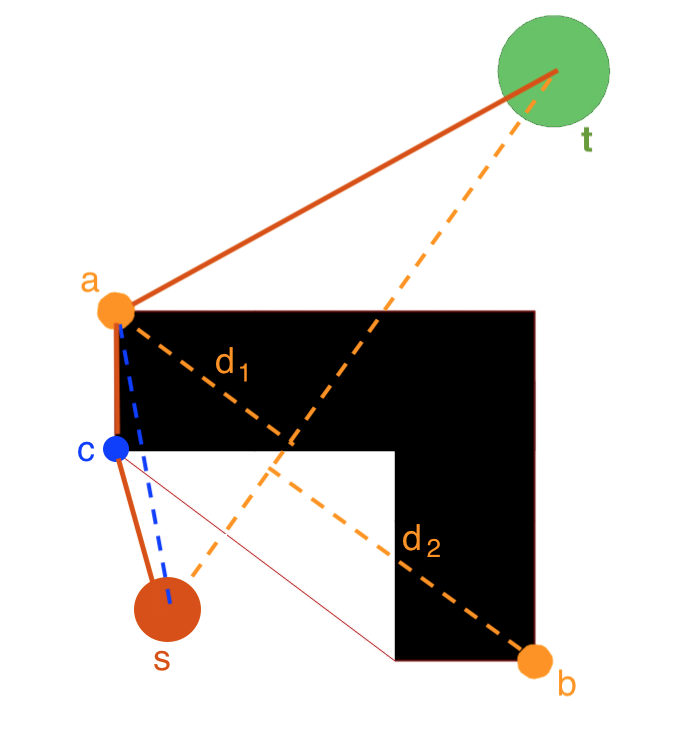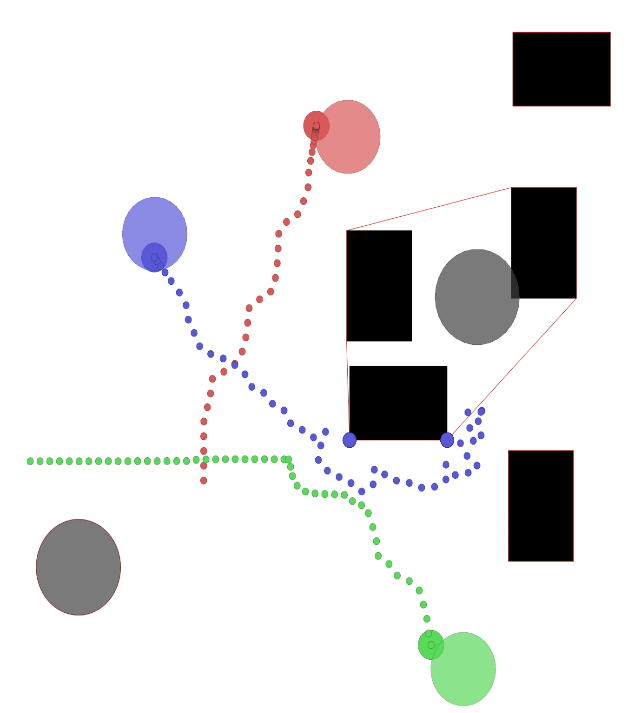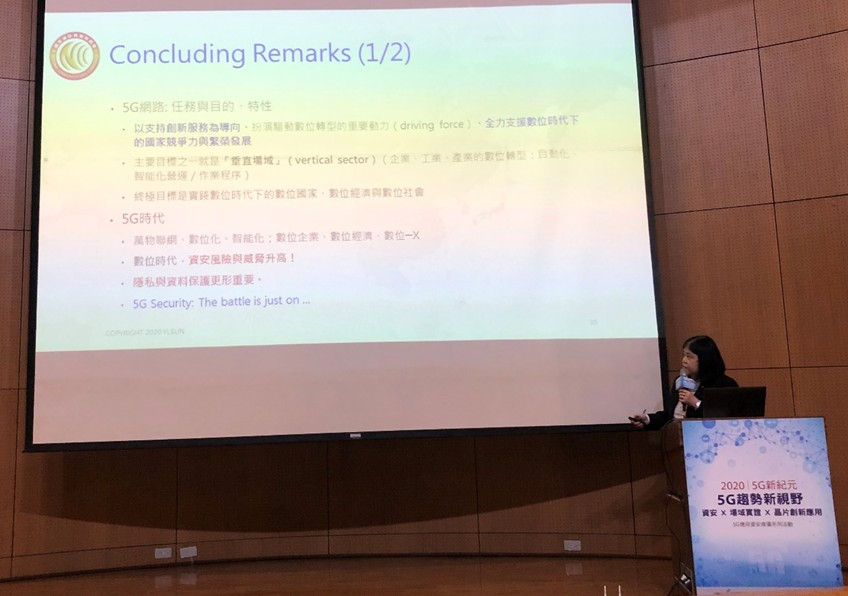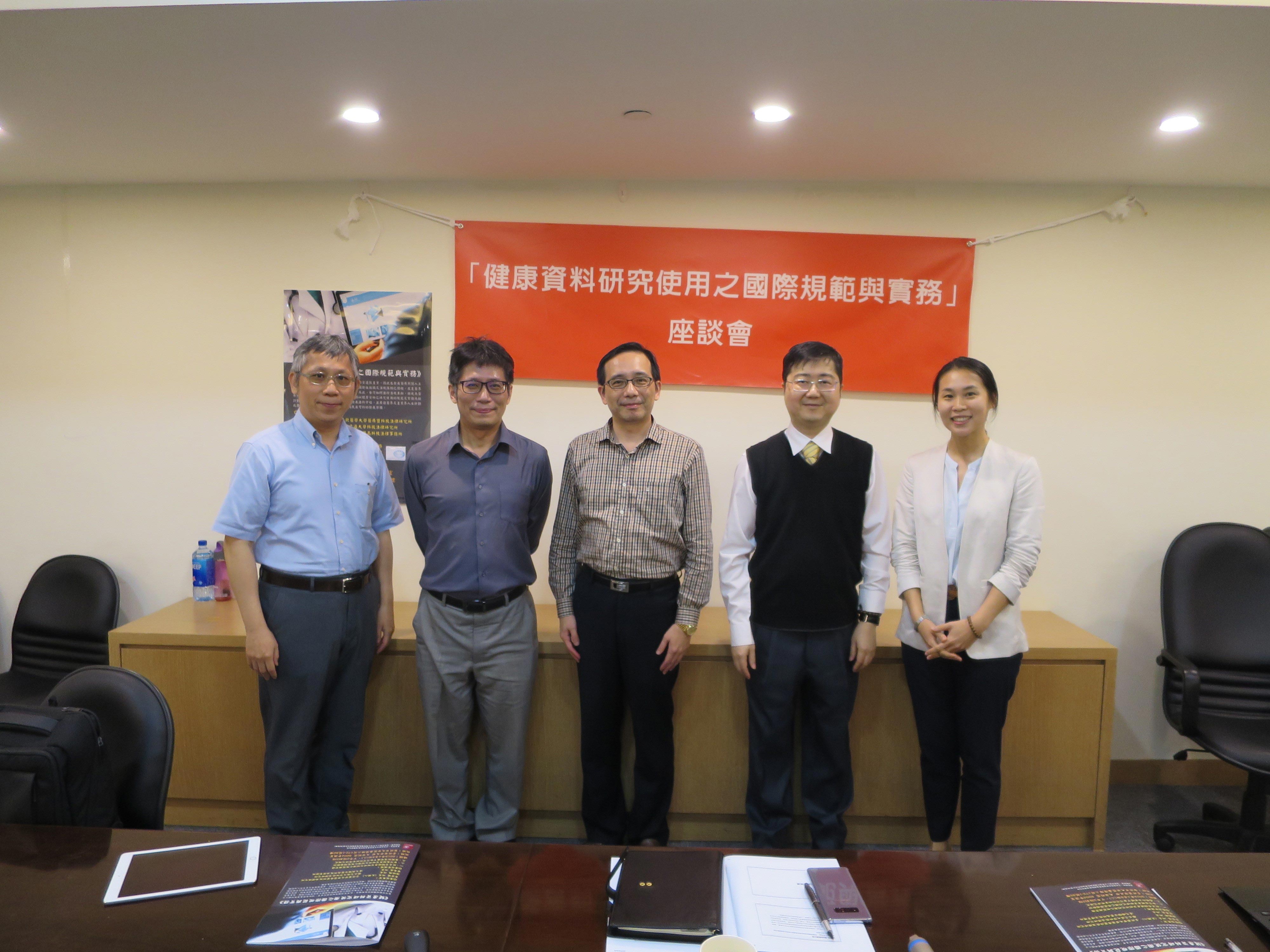▎無人機防撞避障深度學習技術
Decentralized Deep Reinforcement Learning for UAV Collision and Obstacle Avoidance
►國立陽明交通大學 高榮鴻教授 / Prof. Rung-Hung Gau, National Yang Ming Chiao Tung University
我們提出一個分散式深度強化學習方法來達成無人機防撞及避障。我們考慮無人機網路中有多個禁航區。為了避開禁航區且不會太過偏離規劃路線,我們提出合併兩個鄰近的禁航區並提出一個新的無人機路徑規劃演算法。我們採用一個分散式、以策略梯度為基礎的多代理人深度強化學習方案。我們也提出一個優先權分配方法讓鄰近的無人機可以有不同的優先權並且依據優先權來調低飛行速率以避免碰撞且不會大量地增大延遲。
We put forward a decentralized trajectory planning-aided approach of deep reinforcement learning for UAV collision and obstacle avoidance. We focus on a UAV network where there are multiple UAVs and forbidden zones. To bypass forbidden zones without deviating from the ideal UAV trajectories too much, we propose merging nearby forbidden zones based on convex hulls and design a novel trajectory planning algorithm. To achieve collision avoidance in a distributed manner, we propose using a decentralized multi-agent deep reinforcement learning approach that relies on policy gradients.
Moreover, we design a priority-assignment algorithm that enables adjacent UAVs to change their speeds differently to avoid collisions without significantly increasing the overall delay. Simulation results point out that the proposed decentralized trajectory planning-aided deep reinforcement learning approach is superior to a number of alternative approaches in terms of the probability that all UAVs successfully reach their goals within the deadline.
Reference :
- Ju-Shan Lin, Hsiao-Ting Chiu, and Rung-Hung Gau, “Decentralized Planning-Assisted Deep Reinforcement Learning for Collision and Obstacle Avoidance in UAV Networks,” in Proc. IEEE Vehicular Technology Conference (VTC) 2021-Spring, Helsinki, Finland, April 25-28, 2021. (virtual) (Date Added to IEEE Xplore: June 15, 2021)
https://reurl.cc/eEe5bK
根據凸集合化的無人機避障路徑規劃
三台無人機自主防撞與避障飛行路徑
◀我們提出一個分散式深度強化學習方法來達成無人機自主防撞與避障。為了避開禁航區且不會太過偏離無人機規劃飛行路線,我們提出合併兩個以上鄰近的禁航區成為一個凸集合,並提出一個新的無人機路徑規劃演算法。我們採用一個分散式、以策略梯度為基礎的多代理人深度強化學習方案。我們也提出一個優先權分配機制讓鄰近的無人機可以依據優先權的差異來調低飛行速率以避免碰撞且不會過度地增大延遲。
We put forward a decentralized trajectory planning-aided approach of deep reinforcement learning for UAV collision and obstacle avoidance. To bypass forbidden zones without deviating from the planned UAV trajectories too much, we merge adjacent forbidden zones based on convex hulls and design a novel trajectory planning algorithm. To avoid UAV collisions in a distributed manner, we propose a decentralized multi-agent deep reinforcement learning approach based on policy gradients. In addition, we design a priority-assignment algorithm that enables nearby UAVs to adjust their speeds to avoid collisions without enormously increasing the overall delay.
此研究歸屬科技部 AI 專案計畫執行成果,詳細資訊請參考附錄之計畫總表第 17 項
For the name of the project which output this research, please refer to project serial no. 17 on the List of MOST AI projects on Appendix
▎5G趨勢新視野創新應用研討會
5G Trend, New Vision, Innovative Application Seminar
► 國立臺灣大學 林宗男教授 / Prof. Tsung-Nan Lin, National Taiwan University
為了對網路安全問題進行深入研究,我們與臺大電機系及資策會聯合舉辦了「5G趨勢新視野‐資安 X 場域實證 X 晶片創新應用」。在這次會議上,特別邀請了來自通訊產業、學術界和教育界的專家深入討論5G 在網路安全開發和應用中的核心技術和新趨勢。透過這次的活動,我們成功地了解了5G創新的應用場景,跨領域集成的經驗,並找到了正確,適當的網路安全保護計畫和部署方法,以組織5G 網路安全的國家團隊。其中最受矚目的主題是NCC孫雅麗委員的「5G 發展趨勢下的資安挑戰與管理規範」和中華電信林榮賜副總的「5G 垂直應用情境與資安防護策略」。
In order to conduct in-depth research on cyber security issues, NTUEE and III jointly organized “5G Trends and New Horizons-Cyber Security x Live Demonstration x Chip Innovative Application Seminar. At this conference, we invited people from the information industry, academia and education experts to discuss in depth the core technologies and new trends of 5G in the development and application of network security.
Through this event, we successfully understood innovative application scenarios, cross-domain integration experience, and found the appropriate network security protection plans and deployment methods to organize 5G network security national teams. The most striking themes are Commissioner Sun Yali’s “Information Security Challenges and Management Standards under 5G Development Trends” and Lin Rongci’s “5G Vertical Application Scenarios and information security protection strategies”.
Reference :
▲孫雅麗委員的“5G發展趨勢下的資安挑戰與管理規範
Commissioner Sun Yali’s “Information Security Challenges and Management Standards under 5G Development Trends”
▲林榮賜副總的“5G垂直應用情境與資安防護策略
Lin Rongci’s “5G Vertical Application Scenarios and information security protection strategies”
此研究歸屬科技部 AI 專案計畫執行成果,詳細資訊請參考附錄之計畫總表第 4 項
For the name of the project which output this research, please refer to project serial no. 4 on the List of MOST AI projects on Appendix
▎創社群育人才凝聚共識
Creating Community, Cultivating Talent and Maintaining a Consensus
► 臺北醫學大學 李崇僖教授 / Prof. Chung-Hsi Lee, Taipei Medical University
本團隊建置了「AI法律評論網」,以至少每週兩篇之頻率向社會大眾推廣人工智慧之法律或倫理問題分析,藉由更多專家學者參與,讓其成為人工智慧法律與倫理議題之專業溝通平台,以網站經營之內容,推動人工智慧法制與倫理議題之社會認知與共識,將有助於社會議題之討論正向發展,資訊傳播不至於誤導扭曲。而本計畫團隊為國內目前唯一針對智慧醫療法制有完整深入研究之團隊,深受產學研界倚重而經常受邀進行教育訓練與公開演講。
Our team has set up “AI Legal Inquiry’’ (AILI) website to promote the analysis of legal or ethical issues of artificial intelligence to the public articles at least twice a week. By having more experts and scholars, we anticipate AILI become a professional platform for AI legal and ethical issues.
▲網站建置_AI法律評論網首頁
Website “AI Legal Inquiry’’ (AILI)
It will contribute to the positive development of the discussion of social issues, and the dissemination of information will not be misled and distorted. Our project team is the only one in Taiwan that has a complete and in-depth research of the smart health legal system. It is highly respected by the industry, academic and research community and is often invited to conduct training and public lectures.
Reference :
◀座談演講_健康資料研究使用之國際規範與實務座談會
Seminar_ International Standards and Practices for Research and Use of Health Information.
此研究歸屬科技部 AI 專案計畫執行成果,詳細資訊請參考附錄之計畫總表第 32 項
For the name of the project which output this research, please refer to project serial no. 32 on the List of MOST AI projects on Appendix
▎提政策著專書推動變革
Proposing policy, publishing the books and promoting reforms
►臺北醫學大學 李崇僖教授 / Prof. Chung-Hsi Lee, Taipei Medical University
本計畫經比較美、歐和日在個人資料保護法制及人工智慧醫療法制後,認為日本由於社會條件與我國接近最值得參考。儘管如此,美國及歐盟仍是全球重要市場,故其法制對我國產業亦不可忽略。本計畫亦組織專業社群實際參與立法院中關於人工智慧發展促進之法律草案研討,因應COVID-19疫情狀況,在學術期刊與各媒體提出法制面與防疫政策之建議。佐以學術專書出版,解析人工智慧之國際法制趨勢,以及智慧醫療相關法規議題,推動學術討論與實務應用。
After comparing the personal data protection legal systems and artificial intelligence medical legal systems in the United States, Europe and Japan, we believe that Japan is the most worthy of reference due to the social conditions are close to our country. Nevertheless, U.S. and E.U. are important markets in the world, so their legal systems cannot be ignored for our industry.
▲專書出版_人工智慧競爭與法制&智慧醫療與法律
Academic books _ Artificial intelligence competition and legal &eHealth and law.
Our project also organizes professional community to participate in the Legislative Yuan’s discussion of the draft for artificial intelligence development. In response to the COVID-19 epidemic, we propose legal aspects and anti-epidemic policies in scholarly journals and media. With the publication of academic books, which analyze the international legal trend of artificial intelligence, as well as the legal issues related to smart health and promotes academic discussions and practical applications.
▲交流互訪_計畫PI 李崇僖老師與計畫Co-PI 莊弘鈺老師、李志國醫師及林明錦醫師拜訪全球大數據權威英國牛津大學維多.麥爾荀伯格教授,交流相關人工智慧議題。
Academic exchange _Our team discussing about artificial intelligence issues with the global big data expert, University of Oxford, Professor Viktor Mayer-Schönberger.
此研究歸屬科技部 AI 專案計畫執行成果,詳細資訊請參考附錄之計畫總表第 32 項
For the name of the project which output this research, please refer to project serial no. 32 on the List of MOST AI projects on Appendix











